Fishing has come a long way from just casting a line and hoping for the best. These days, technology is right there in our tackle boxes, and GPS devices are at the heart of this digital revolution, reshaping how we find and catch fish. Whether you’re a commercial fisherman or just heading out for a relaxing day by the lake, GPS technology ensures you know exactly where you are and where the fish are biting.
Back when GPS devices first hit the market, there was a fair bit of skepticism. These weren’t exactly lightweight gadgets, and many anglers preferred sticking to their tried-and-true methods. The idea of relying on satellites to find fish seemed, well, a bit sci-fi. But soon, those same skeptics found themselves won over by the precision and convenience GPS offered.
Fast forward a few decades, and these tools have become a staple. Fishermen around the world now rely on GPS for everything from mapping out complex waterways to locating the perfect fishing spots in vast oceans. It’s genuinely changed the game, making fishing both more accessible and more rewarding for everyone. GPS devices have transformed not just how we fish, but also the way we plan and execute our excursions.
The Early Days: First Generation Fishing GPS Devices
Back in the day, the first generation of fishing GPS devices was revolutionary despite their clunkiness. These gadgets had quite a few limitations, both in terms of physical size and technical capabilities, but they hinted at a future full of possibilities. Navigating with these early tools was a far cry from the sleek, highly accurate devices we see today.
These pioneering devices were bigger and less user-friendly, often leaving anglers fumbling more with their equipment than focusing on fishing. Connectivity was sketchy as well, with frequent issues catching satellite signals, especially in remote or densely wooded areas. Accuracy could also be a bit hit or miss, sometimes leaving fishermen off course.
Using these early GPS units required a good dose of patience and adaptability. Fishermen back then had to get comfortable with digital interfaces that many had never interacted with before. There was a learning curve, no doubt about it. However, those who stuck with it began to realize the benefits that came with embracing digital assistance.
Despite the hurdles, early adopters quickly saw how these devices could aid in marking favorite fishing spots and navigating unfamiliar waters efficiently. These technologies, while primitive compared to modern standards, laid the groundwork for what would become indispensable tools in the angler’s toolkit.
From Consumer Needs to Innovations: The 2000s Surge
The 2000s marked a real turning point for fishing GPS devices, embracing innovation driven primarily by what the consumers—fishermen, in this case—wanted and needed out there on the water. As feedback poured in, the industry tuned in closely to these voices, leading to some pretty big changes.
Manufacturers realized that fishermen needed more than just a way to navigate. Features like detailed mapping, the ability to mark and track waypoints, and a robust interface became standard. These additions made trips not only more efficient but also added a layer of strategic planning to fishing outings that wasn’t there before.
Tech companies recognized the potential of this market and started collaborating more with fishing gear brands. This collaboration brought about even more functionality and integration, linking GPS with other devices on the boat. Suddenly, anglers had comprehensive systems that could do everything from track wind patterns to suggesting optimal routes back to shore.
Listening to the needs and addressing them through cutting-edge features not only improved the tools but also drastically enhanced the overall fishing experience. This period saw technology not just as aid but as a full-fledged partner in a fisherman’s quest, making everyday outings all the more productive and enjoyable.
Revolutionary Features: Portable and Smart Capabilities
The shift to portable GPS devices transformed them from cumbersome gadgets to user-friendly essentials. As manufacturing technology advanced, GPS units became lighter, more compact, and easier to manage on any fishing boat or kayak. Portability meant these devices were no longer a hindrance but a valuable asset on the water.
Smart capabilities took GPS technology to the next level. Touchscreens replaced bulky buttons, offering intuitive navigation that was both quick and efficient. Integration with fish finders opened up new ways to map underwater structures and track fish movements, providing anglers with a comprehensive picture of their surroundings.
Battery life used to be a concern, but that’s changed. Now, most devices are equipped to handle long fishing trips without a hitch. Durability improvements mean they can withstand harsh marine environments, from intense sunlight to heavy rain, ensuring reliability under any conditions.
These advancements made GPS devices indispensable for both novices and seasoned anglers. The convenience of capturing detailed sonar data, setting course routes, or weather alerts just added to why these units became favorites in the fishing community. Fishing became more about precision and strategy than ever before, thanks to these revolutionary tools.
Modern Era: How Technology is Redefining Fishing
Today’s technology has taken fishing GPS devices into realms once thought impossible, giving anglers tools that blend sophistication with simplicity. Integration with drones has become a real game-changer. Now fishermen can capture aerial views of fishing spots, giving a new perspective that’s especially useful for scouting hard-to-reach areas.
Artificial intelligence (AI) and machine learning are making waves in predicting fish behavior. These smart systems analyze environmental data, past patterns, and even real-time conditions to suggest the best fishing spots and times. It’s like having a seasoned skipper’s advice right in your pocket.
Cloud technology has added another layer of interconnectedness, allowing for easy data storage and sharing. Fishermen can now rapidly share waypoints or fishing reports with others in their community or access extensive databases of collective fishing knowledge, enhancing collaboration and learning.
These technologies are changing not just the approach to fishing but broadening the scope of what’s possible. With these innovations, the journey is becoming as exciting and rewarding as the catch itself. Fishermen look to the future, technology at their side, ready for the next big adventure.
Challenges and Solutions in GPS Technology for Fishing
No technology is without its hurdles, and fishing GPS devices are no exception. The demand for extended battery life is always top of the list, especially for those long, multi-day fishing excursions. Manufacturers are tackling this by developing more efficient power systems and solar charging options, ensuring that devices can keep pace with a full day on the water.
Environmental impact is another concern. Many fishermen are becoming increasingly aware of the ecological footprint left by their tech. The industry’s response involves utilizing more sustainable materials and manufacturing processes, aiming for devices that are as eco-friendly as the angling community would like them to be.
Geographical limitations are a challenge too. Areas with dense tree cover, extreme weather, or remote locations can hinder satellite signals and device accuracy. Continuous upgrades in satellite technology and software development are enhancing precision and reliability, even in the toughest conditions.
Software updates are also crucial. Regularly updating GPS devices can prevent many common issues, keeping your tech running smoothly and improving user experience. The evolution of fishing GPS technology involves more than just hardware innovations; it’s about integrating intelligent solutions that address everyday challenges faced by the fishing community. Effectively leveraging these solutions ensures a seamless blend of technology and tradition in the world of fishing.
Future Outlook: Beyond Present-Day Fishing GPS Devices
With technology marching steadily forward, the future of fishing GPS devices promises some thrilling developments. The integration of IoT (Internet of Things) and 5G technology stands to change the landscape significantly. With faster data speeds and interconnected devices, anglers could access real-time data on weather, tides, and even fish movements more efficiently than ever before.
Virtual reality might sound like something out of a science-fiction movie, but it’s fast becoming a reality in the fishing world. Imagine simulating entire fishing environments right from your living room, practicing techniques and plotting your next trip with unprecedented detail and precision.
Of course, as technology evolves, so too does the need for responsible use. Sustainability and ethical practices surrounding the development and disposal of these devices are more pertinent than ever. Both manufacturers and users have roles to play in ensuring that fishing remains a harmonious interaction between man, technology, and nature.
As we look to the future, it’s clear that fishing GPS devices will continue transforming how we interact with the world’s waters. Embracing these changes can lead not only to a better catch but a more enriching experience when it’s just you, your line, and the open water.
As an Amazon Associate I earn from qualifying purchases.
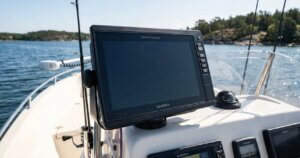
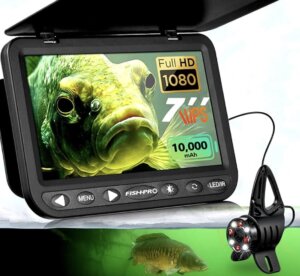
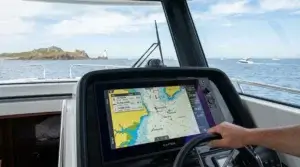
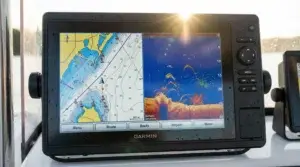

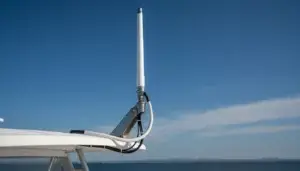
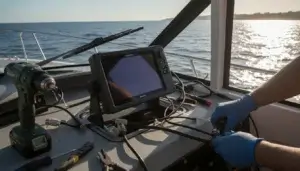

This post gives a great overview of how fishing GPS devices have evolved, from the old bulky models to the sleek, smart systems we use today. It’s cool to see how much easier fishing has become, thanks to improvements in accuracy, portability, and even features like AI and drones that help us plan better trips. I also like how it touches on the challenges, like battery life and environmental concerns. It got me thinking though—how will future GPS tech continue to improve while keeping things eco-friendly for the fishing community?
Thanks for the thoughtful comment! It’s amazing to see how far fishing GPS tech has come, right? The leap from clunky hardware to AI-driven, drone-compatible systems is wild. You bring up a great point about the future—balancing innovation with sustainability is going to be key. I can imagine we’ll see more solar-powered options, biodegradable components, and smarter energy use built into future models. Maybe even systems that help monitor and protect marine environments in real time. It’s definitely an exciting space to watch!
Thank you for sharing this interesting article on the evolution of fishing GPS devices. It’s fascinating to see how far the technology has come, from the early, clunky devices to today’s sophisticated tools that integrate AI, drones, and cloud capabilities.
I’m curious to hear your thoughts and experiences with fishing GPS devices. Do you use them regularly in your fishing adventures? How have they impacted your technique and overall enjoyment of the sport?
Eric
Hi Eric,
Thanks so much for your comment—I’m glad you enjoyed the article! It really is amazing to see the leap from those early, bulky units to the sleek, high-tech devices we have today. The integration of AI, drones, and cloud-based tools has truly taken fishing to a whole new level.
As for personal experience, yes—I do use GPS devices regularly when I get the chance to head out on the water. They’ve definitely changed the game for me. Being able to mark productive spots, track routes, and access real-time data has not only made my outings more efficient but also way more enjoyable. There’s something really satisfying about combining a love for nature with cutting-edge tech.
How about you—have you used any of the newer GPS setups in your fishing trips? I’d love to hear how others are putting them to use!
Tight lines,
Andrejs
Hello!
Thank you for this insightful article on the evolution of fishing GPS devices. It’s fascinating to see how technology has transformed from basic navigation tools to sophisticated systems that enhance both the efficiency and sustainability of fishing practices. The integration of GPS with sonar and mapping tools has revolutionized the way anglers approach fishing. Modern devices not only pinpoint precise locations but also provide detailed underwater maps, helping fishermen identify optimal fishing spots and understand underwater terrains better.
Looking ahead, the incorporation of Artificial Intelligence (AI) and Augmented Reality (AR) into fishing technology is particularly exciting. AI can analyze vast amounts of data to predict fish movements and behaviors, while AR can overlay real-time information onto the angler’s view, enhancing situational awareness and decision-making. I’m curious, how do you see these advancements impacting traditional fishing communities? Are there initiatives in place to make these technologies accessible to small-scale fishermen, ensuring they aren’t left behind in this technological shift?
Thank you again for shedding light on these developments. It’s clear that the future of fishing is not just about catching more fish but doing so responsibly and sustainably.
Angela M 🙂
Hi Angela,
Thank you so much for your thoughtful comment! I’m really glad you found the article insightful. You’re absolutely right—the evolution of fishing GPS devices has been nothing short of transformative. The integration of GPS with sonar and advanced mapping has indeed opened up new dimensions for both recreational and commercial fishing, allowing for smarter, more sustainable practices.
The potential of AI and AR in this space is incredibly exciting. AI’s ability to analyze environmental data and predict fish behavior could help reduce overfishing by targeting efforts more precisely, while AR has the potential to make real-time decision-making more intuitive and informed.
As for traditional fishing communities, that’s such an important point. Some promising initiatives focus on bridging the digital divide—nonprofits and governmental programs in certain regions are working to provide training and subsidized access to these tools for small-scale fishers. That said, there’s definitely more work to be done to ensure equitable access and to adapt technology in ways that respect local knowledge and practices.
Thanks again for your thoughtful reflections—your curiosity and engagement are exactly what push these conversations forward!
Warm regards,
Andrejs
Really enjoyed your tour through GPS history in angling. I started out with a clunky handheld eTrex duct‑taped to the console—felt revolutionary at the time!
Quick questions:
On smaller boats these days, do you see more folks leaning on phone apps like Navionics, or are dedicated chartplotters still the go‑to offshore?
The newer touch‑screen units sip power like my morning coffee. Any tricks for managing battery drain during long trolling sessions?
The future‑casting bit about AR overlays got me fired up—imagine seeing your waypoints floating above the water through smart glasses. Can’t wait to chart a course into that era.
Thanks for the deep dive!
Thanks so much — really appreciate you joining the ride through GPS history! Love that image of the eTrex duct-taped to the console — total classic move, and yes, back then it felt like the future.
Great questions: On smaller boats, I’m definitely seeing more anglers turning to apps like Navionics, especially for inshore or casual use. That said, when it comes to offshore fishing, dedicated chartplotters are still king for reliability, screen readability in direct sun, and overall ruggedness.
And yes, those power-hungry touchscreen units can be a drain! A few tricks that help: dimming the screen a notch, disabling unnecessary features (like sonar when you’re trolling long runs), and using a dedicated lithium battery bank just for electronics can stretch your runtime considerably.
Glad the AR idea sparked your imagination — same here! The blend of tech and water is only going to get more immersive. Exciting times ahead.
This is a fascinating look at how far fishing technology has come—especially when it comes to GPS devices. It’s incredible to see how what started as clunky, often unreliable equipment has evolved into smart, interconnected tools that not only help locate fish but now predict behavior using AI and cloud integration. As someone who appreciates both nature and innovation, I can’t help but wonder:
At what point does the reliance on advanced tech in fishing start to take away from the traditional skills and instincts that many anglers value so deeply? Can we find a balance that preserves the sport’s roots while embracing its high-tech future?
I’d love to hear how others feel about that—especially seasoned fishermen who’ve seen this evolution firsthand.
Absolutely—your comment hits on a really important tension in the evolution of fishing. The leap from paper maps and gut instincts to AI-powered sonar and real-time cloud data is astounding. These advancements have undoubtedly made fishing more efficient and accessible, but they also raise valid concerns about losing touch with the more traditional, skill-based aspects of the sport.
Finding that balance is key. Many seasoned anglers might argue that technology should complement, not replace, intuition and experience. Maybe the sweet spot lies in using these tools as aids—ways to enhance understanding of the environment rather than shortcuts to a quick catch.
Would love to hear from those who’ve spent decades on the water—how do you integrate tech into your practice without losing the essence of the craft?